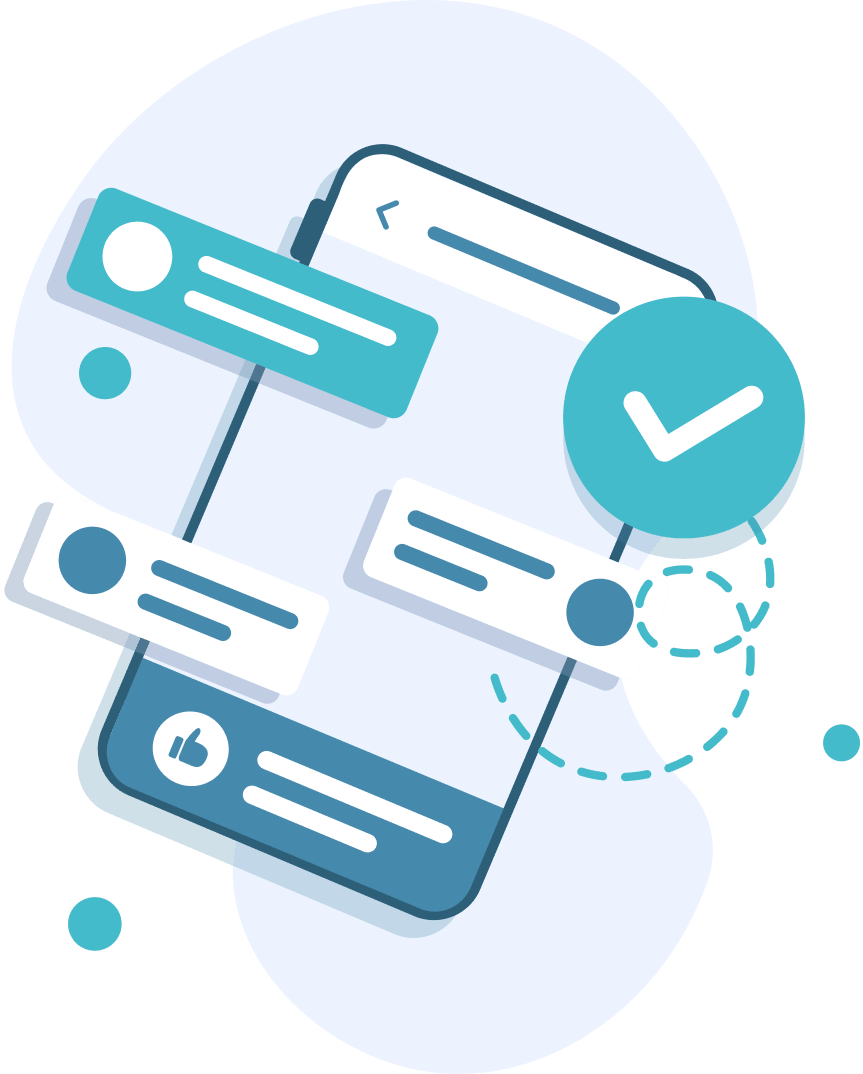10DLC & Flowroute
10DLC, which stands for 10-digit Long Code, is a new set of requirements that applies to Application-to-Person (A2P) Messaging over US 10-digit geographic numbers; messaging over toll free numbers remains unaffected at this time. 10DLC is intended to protect consumers from spam, while ensuring that good actors have access to the resources they need to engage with their customers. As of May 2021, all major US wireless carriers have announced support for this new ecosystem.
The new requirements come in two categories: Brand & Campaign Registration, and Carrier Surcharges.
- Brand & Campaign Registration: Customers generating long code A2P messages are now required to register both their business (Brand) and messaging use-case(s) (Campaigns) in a central repository.
- Carrier Surcharges: these are wireless-carrier-imposed surcharges, sometimes referred to as ‘pass-through fees’. They vary by carrier, message-type (SMS or MMS), and in the case of AT&T, also by type of Campaign. We’ve compiled a list of these carrier surcharges here.

Brand & Campaign Registration is the more involved of the two elements described above. Messaging service providers (labeled Campaign Service Providers or CSPs) like Flowroute are required to register the Brands they serve in a common information hub called The Campaign Registry (TCR). Customers are required to provide a variety of information about their business such as EIN, address and contact information in order to successfully register a Brand.
To register a Campaign, which is same as Messaging use-case, customers must start by choosing from about a dozen possible Campaign options such as alerts, promotional marketing, two-factor authentication, to name a few. They must also provide a description of the campaign, sample message(s), and indicate options they provide for their end-users to opt in or out of receiving Messages, among other information.
Additionally, AT&T has established a ‘Message Class” system, categorizing Campaign types by risk level, and assigning Messaging throughput and carrier surcharges for each Class.
Finally, customers must associate long code phone numbers to a Campaign, to complete the Registration process.
There are several costs associated with Brand and Campaign Registration; we’ve listed these at the bottom of this page.
In conclusion, by having access to both business and use-case information, the major wireless carriers believe they can more effectively police abuse of long code A2P Messaging, while simultaneously supporting its legitimate use.
What Does This Mean for Flowroute Customers?
Firstly, we’ve put together a phased approach to build the necessary tooling that will allow you, our customers, to perform Brand & Campaign Registration in a straightforward manner directly via Flowroute. To do so, we’ve worked diligently with carriers as well as our providers to understand the various moving parts in this new environment to the extent that such insight is currently available.
Phase 1: By the end of May 2021, we expect to share with you details about a 10DLC Registration Page on our Manage Portal, using which you can submit all Brand & Campaign registrations via a .csv file.
Phase 2: We also plan to make available, via both Manage and our Messaging API, automation that will allow you to further mechanize all things 10DLC. Stay tuned for details on this exciting new capability!
Secondly, there is still much uncertainty regarding the start dates for various carrier-specific charges. For example, T-Mobile had originally stated that their Campaign activation fee would start April 1, but have since rescinded that decision, saying they will now provide a 30-day notice before the new start date. So it’s important that you check-in with your Flowroute account manager if you have specific questions, since the relevant information appears to change rather frequently.

Brand & Campaign Registration Costs
Expected Registration Fees:
- Brand registration fee—$4 per brand/one-time fee
- Campaign registration fee—$50 per campaign/one-time fee from T-Mobile
Expected Monthly Fees:
- Campaign running fee—$2 to $10 per campaign (determined by use case)
- Carrier surcharges—$.002-.005 per SMS (in- and out-bound)
Possible Fines and Penalties if not registered:
- Higher surcharge fees per message will likely be applied
- Throttling and filtering of messages
- T-Mobile specific non-compliance fees
- Text Enablement: There will be a $10,000 fee if T-Mobile receives a complaint that traffic is being sent prior to the program being fully approved
- Grey Route: There will be a $10 fee per message if A2P messages are sent over P2P routes
- 10DLC Long Code Messaging Program Evasion: There will be a $1,000 fee if a program is found to be using techniques such as snowshoeing, dynamic routing, or unauthorized number replacement
- Content Violation: There will be a $10,000 fee for each unique instance of the third or any subsequent notification of content violating the T-Mobile Code of Conduct involving the same content provider. This includes SHAFT (Sex, Hate, Alcohol, Firearms, Tobacco) violations, spam, phishing, and messaging that meets the Severity 0 violation threshold as documented in this CTIA handbook.
Get more info
We appreciate your commitment to ensuring safe and trusted communications. Please reach out to press
Sign up nowAlso you can talk to an expert about your needs related to 10DLC updates and registering your campaigns
Contact Sales